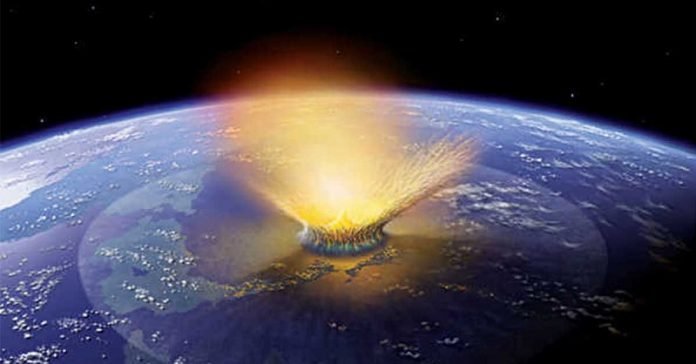
How do you track an asteroid that hit the Earth over 60 million years ago?
By using a combination of geology and computer simulations, at least according to a team of scientists from the Southwest Research Institute (SwRI).
Those methods might have let them solve a long-standing mystery of both archeology and astronomy – where did the asteroid that killed the dinosaurs come from?
The fact that an asteroid impact was the catastrophe that finally killed the dinosaurs is now widely accepted in scientific circles.
Now known as the “Chicxulub event”, it was named after the 145 km wide crater in the Yucatan peninsula that the 10 km wide asteroid caused when it impacted the planet about 66 million years ago.
Large creatures like dinosaurs having evolved at all, and their reigning over the Earth for hundreds of millions of years, shows that such large impacts were not very common in their time – so where did the impactor come from?
Turns out it was probably from the outer asteroid belt.
Two main findings led to this conclusion – the first was some geology samples collected from rocks formed around the time of the impact.
The second was a detailed model of different types of asteroids and comets and how they might interact with the different forces at play in the asteroid belt.
Sixty six million year old geology samples are not easy to come by, but the SwRI team managed to, and noticed some similarities in the makeup of the rock they contained.
It pointed to the Chicxulub impactor being a “carbonaceous chondrite” asteroid, which is a common type of asteroid, many of which pass near the Earth. The only difference is that none of them are anywhere near close to the scale of the 10 km wide Chicxulub asteroid.
So the question still loomed, where did such a large asteroid come from? To find out, the SwRI researchers turned to mathematical models and a supercomputer.
Using NASA’s Pleaides Supercomputer, the team developed a model of 130,000 different kinds of asteroids and watched their interaction with a much more complete set of modeled forces in the asteroid belt.
They found that thermal forces from the sun, as well as gravitational forces from other asteroids, can kick asteroids in the outer belt into a position known as a “dynamic escape hatch”, where a quick gravitational tug can result in the object hurling itself in towards Earth’s orbit.
These kind of gravitational escape happened relatively often in the model around once every 250 million years for an asteroid the size of the Chicxulub impactor. That’s around 10 times more frequently than previously thought.
The team also realized that the class of carbonaceous chondrite asteroids that Chicxulub belonged to were much more common in the outer belt, and therefore more susceptible to wandering into one of these dynamic escape hatches.
So, it seems the asteroid that killed the dinosaurs was a relatively rare large object thrown into the inner solar system by a confluence of gravitational and thermal forces.
There are some other explanations as well – such as a Harvard study that pointed to the source of the impactor as being the outer reaches of the solar system, and another SwRI study that suggests the disintegration of a larger asteroid might have caused it.
All that doesn’t sound particularly reassuring, given the possibility that a similar impact today would likely wipe out most of humanity.
But, we still have almost 200 million years or so before it would happen again.
And this time Earth has a defense mechanism that it didn’t the last time around – a species that knows what to look out for, and potentially how to stop such an impact from ever happening again.
Written by Andy Tomaswick.
Source: Universe Today.



